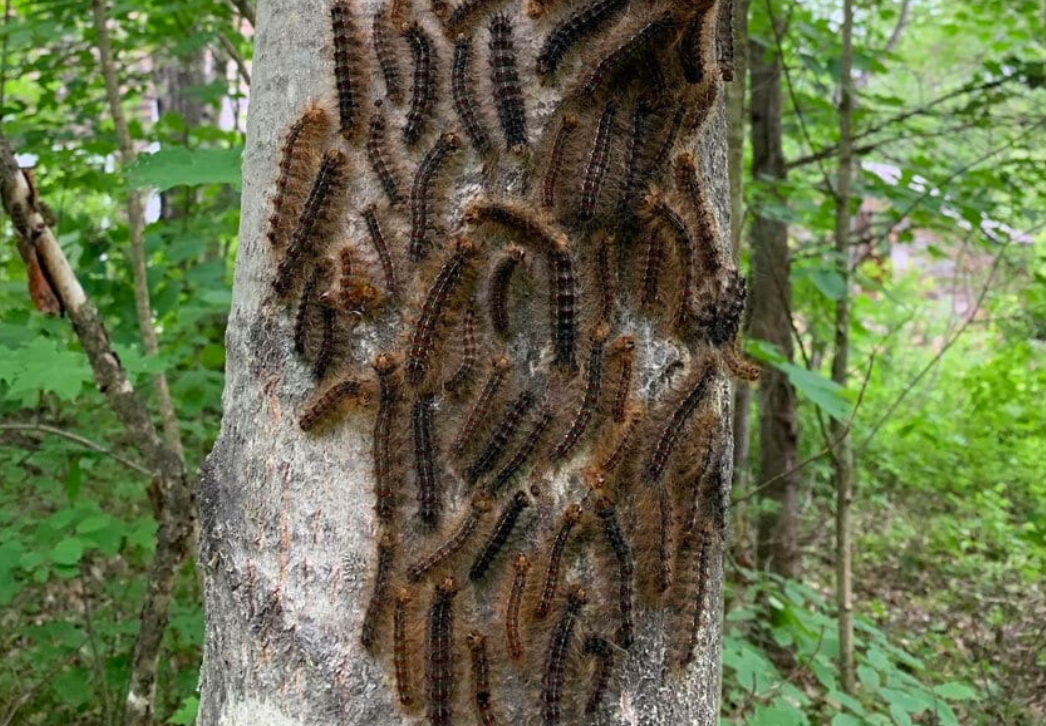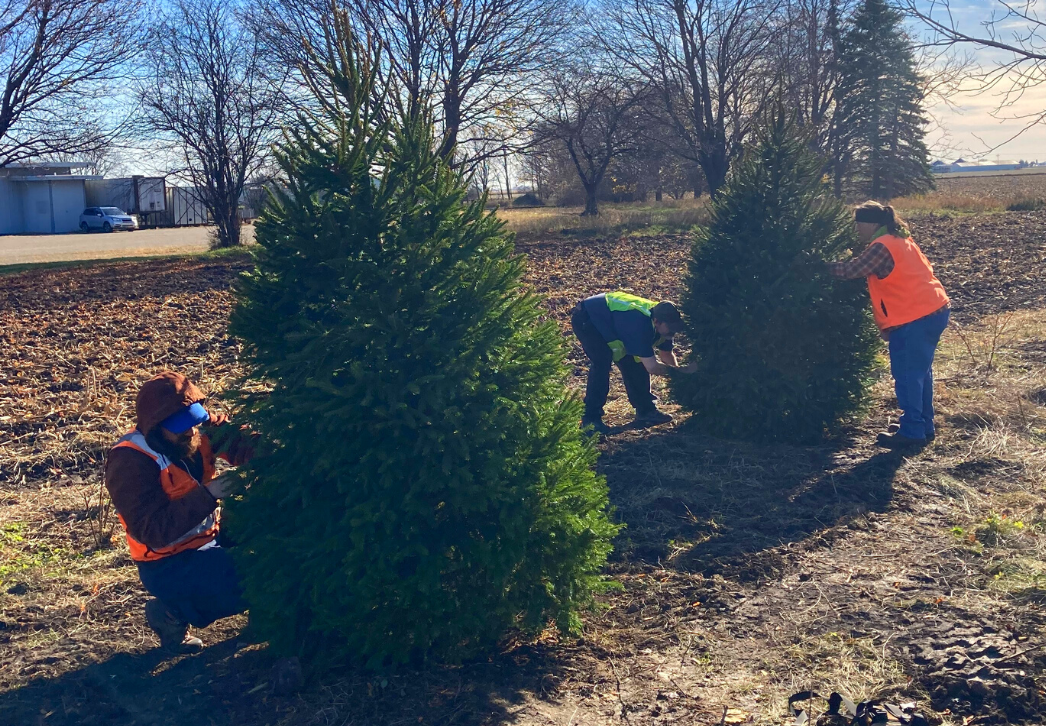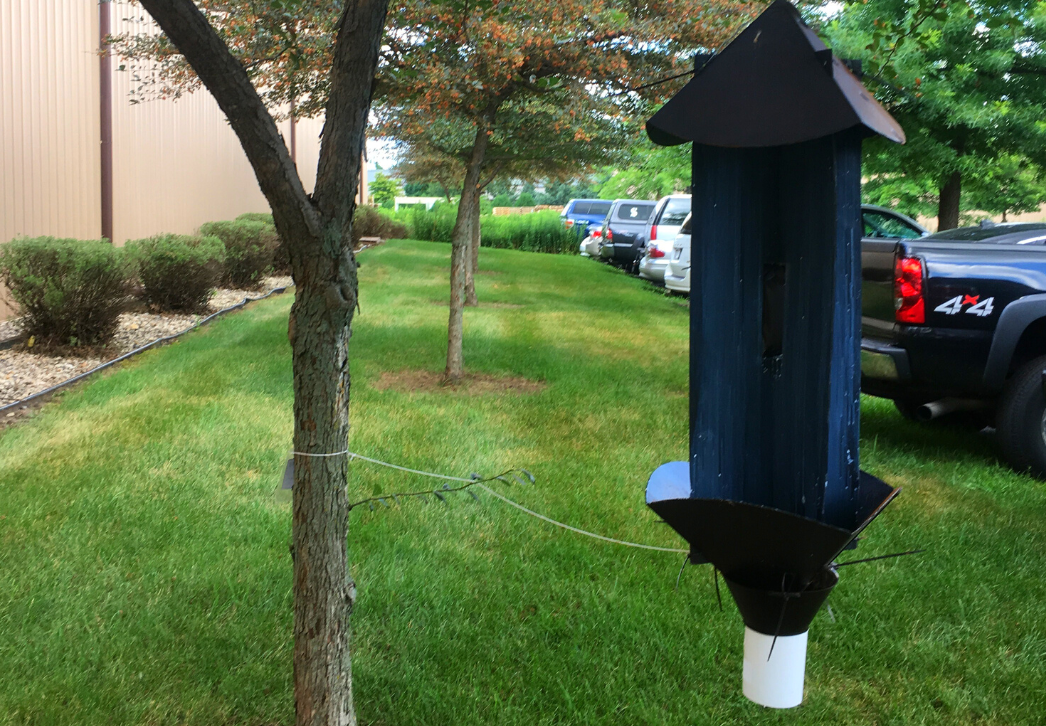|
|
During the 2022 season, Pest Survey Program field specialists, in collaboration with plant pathologists at the Plant Industry Laboratory in Madison, carried out several early detection surveys for high-risk insects, pathogens, and weeds. While some of the survey targets, including spotted lanternfly and hemlock wooly adelgid, are not known to occur in Wisconsin, others, such as velvet longhorned beetle and lipstick rust, are emerging threats that have been found in the state but currently have limited distributions.
In addition to these exotic pest detection projects, DATCP’s Spongy Moth Program completed its annual trapping survey to identify emerging populations and determine future treatment areas. Spongy moth survey projects began in Wisconsin in 1971, and a total of 1,050,400 traps have been set throughout the last 52 years. Even more remarkable is the cumulative total of 5,926,725 spongy moths seasonal trappers have counted in those traps!
This second end-of-year edition of Field Notes highlights the results of our 2022 forest and nursery pest surveys and provides an update on a recent interception of spotted lanternfly on imported nursery stock.
__________________________________
  Spongy moth caterpillars | Melissa Hart
 
|
|
Spongy moth trap catches roughly doubled throughout Wisconsin this season, marking a third consecutive year of population growth. The Spongy Moth Program set 10,044 traps in 47 counties, spanning from central to western Wisconsin. Analyses of trapping sites indicate statewide male moth totals increased by 103% from 99,847 total moths (9.3 moths/trap) in 2021 to 201,549 total moths (20.1 moths/trap) in 2022. The sharply higher counts reflect an outbreak phase that has been building since an exceptionally low population was recorded in 2019. Such outbreaks are approximately every ten years in areas infested with spongy moth, and usually persist for 2-4 consecutive years before populations collapse.
Population increases were most dramatic in the eastern two-thirds of Wisconsin, where spongy moth has been established for years. Reports from landowners and Wisconsin Department of Natural Resources aerial surveys indicated the heaviest spongy moth caterpillar feeding occurred in Bayfield County and around the Kettle Moraine region of southeast Wisconsin. In the sparsely-infested western third of Wisconsin, rates of spread remained moderate in southwestern and west-central parts of the state. Spread rates were notably high, however, in northwestern Wisconsin along the Lake Superior shore.
Favorable weather conditions are generally accepted as the driving force behind Wisconsin’s recent population increase. Three consecutive years of warm, dry summers and relatively mild winters have limited the impacts of larval diseases and winter egg mass mortality, respectively. As a result, more caterpillars have been hatching and surviving to adulthood each year. If favorable weather conditions persist, spongy moth populations will likely remain high or continue to increase in 2023. |
|
 __________________________________
|
|
A report from an observant Walworth County resident in early November led to the confirmation of several spotted lanternfly (SLF) specimens on nursery stock originating in Pennsylvania. The resident discovered the lanternflies, all of which were dead, shortly after purchasing the plants from an Illinois nursery. He recognized the insects as an unwanted highly invasive species and contacted the nursery, which notified the USDA Animal and Plant Health Inspection Service (APHIS) of the interception.
Follow-up inspection of the resident’s property found seven additional dead SLF specimens hidden in the branches of recently planted Norway spruce trees. No live insects or egg masses were observed. The property has been designated as a high-priority site for continued surveillance and detection trapping in 2023.
The Pennsylvania nursery, where infested stock was grown, is under a SLF compliance agreement and provided evidence that the plants had been treated prior to export. However, this recent interception serves as a reminder to always inspect newly purchased nursery stock before planting since SLF and other exotic pests can evade treatment. Early detection of SLF relies heavily on public awareness and reporting of potential finds. Any suspected SLF observations should be immediately reported to the DATCP online SLF portal. Please include a photo of the specimen or a physical sample, noting the precise location of the find. |
|
 Inspecting trees for SLF | C. Foelker DATCP
|
|
 __________________________________
|
|
DATCP plant pest specialists conducted a survey at nurseries and garden centers for 19 exotic pests at elevated risk of invading the state through the nursery trade. Pest detection work prioritized sites in an 11-county metropolitan area across southeastern and south-central Wisconsin where interceptions of non-native species have historically occurred. The 17 nursery and garden center locations included in the 2022 survey were selected based on their high sales volume of plants, mainly from out-of-state suppliers.
From April through August, sites were visited biweekly to monitor pheromone traps, to scout nursery stock for insect and disease symptoms, and to collect plant samples for pathogen, insect and nematode identification at the Plant Industry Lab. A total of 78 pheromone traps were set and 410 insect catch samples were generated. In addition, a total of 18 symptomatic plants were sampled for disease diagnosis.
Summarized below are the target organisms, survey methods used, and results. All insect trap samples were negative for the exotic priority species. Disease analysis found the lipstick rust pathogen (also referred to as Japanese apple rust) Gymnosporangium yamadae on samples from two sites in Dane County and one site in Sheboygan County. Lipstick rust was confirmed for the first time in Wisconsin in 2021. It has now been documented in nine counties (Dane, Kenosha, Milwaukee, Outagamie, Ozaukee, Portage, Racine, Sheboygan, and Waukesha) and the prevalence of cases in the last two seasons indicates this invasive disease of apples, crabapples and juniper is more widely distributed in the state than was initially known. |
|
__________________________________ |
|
The Pest Survey and Nursery programs at DATCP continued efforts this year to detect and prevent the introduction of Phytophthora ramorum into the state. Phytophthora ramorum is a plant pathogen that causes the diseases known as Ramorum blight and sudden oak death, which have led to devastating tree mortality in the coastal forests of California and Oregon since the mid-1990s. It infects more than 100 plant species, including hardwood and conifer trees, shrubs, ferns, and common horticultural plants such as azalea, magnolia, and viburnum. DATCP has intercepted P. ramorum on imported nursery stock in the past.
For the 2022 season, 24 symptomatic plants were collected during surveys and inspections in nurseries and greenhouses and as part of a trace forward event involving a consumer who received potentially infected plants. Host plants tested for P. ramorum at the Plant Industry Lab included andromeda (1), pieris (5), rhododendron (16), and viburnum (2). All plants were negative for P. ramorum. One Rhododendron variety ‘Olga Mezitt’ tested positive for a different species, Phytophthora pini, which is of lesser concern. To date,
P. ramorum has never been detected on plants in the Wisconsin landscape.
DATCP has enacted an external quarantine on items that could harbor and spread P. ramorum. An external quarantine means that items including nursery stock, unprocessed wood, soil, and other plants and plant parts (mulch, wreaths, garlands and greenery) cannot be brought into Wisconsin from areas where the pathogen is known to occur without an inspection and certificate from the exporting state. |
|
 __________________________________
|
|
|
Velvet longhorned beetle |Boris Laboda UkrBIN 28510
 
|
|
Surveys for velvet longhorned beetle (VLB), Trichoferus campestris, have been conducted in Wisconsin since 2017, following the first detection in Milwaukee County. For the 2022 season, trapping was conducted at 16 sites across eight counties with no prior detections. The survey resulted in the capture of one VLB specimen in a Washington County trap and 10 beetles in two Sauk County traps, representing two new county records.
In six years, surveys have collected VLB in 12 southern Wisconsin counties: Columbia, Dane, Fond du Lac, Kenosha, Milwaukee, Ozaukee, Racine, Rock, Sauk, Walworth, Washington, and Waukesha. All collections were made using cross-vane panel traps with pheromone lure.
The pest potential of this introduced Asian wood borer remains unknown. Velvet longhorned beetle been found in at least 14 states and is established in Illinois, Wisconsin and Utah. In Wisconsin, it has been intercepted in rustic hickory-style log furniture manufactured in China (2016) and collected repeatedly in survey traps. Research indicates in may be a secondary agent with a preference for stressed or unhealthy trees. To date, there have been no environmental or economic impacts in Wisconsin attributed to VLB. |
|
 Cross-vane panel trap for VLB | R. Pinski DATCP
|
|
__________________________________ |
|
|
|
|